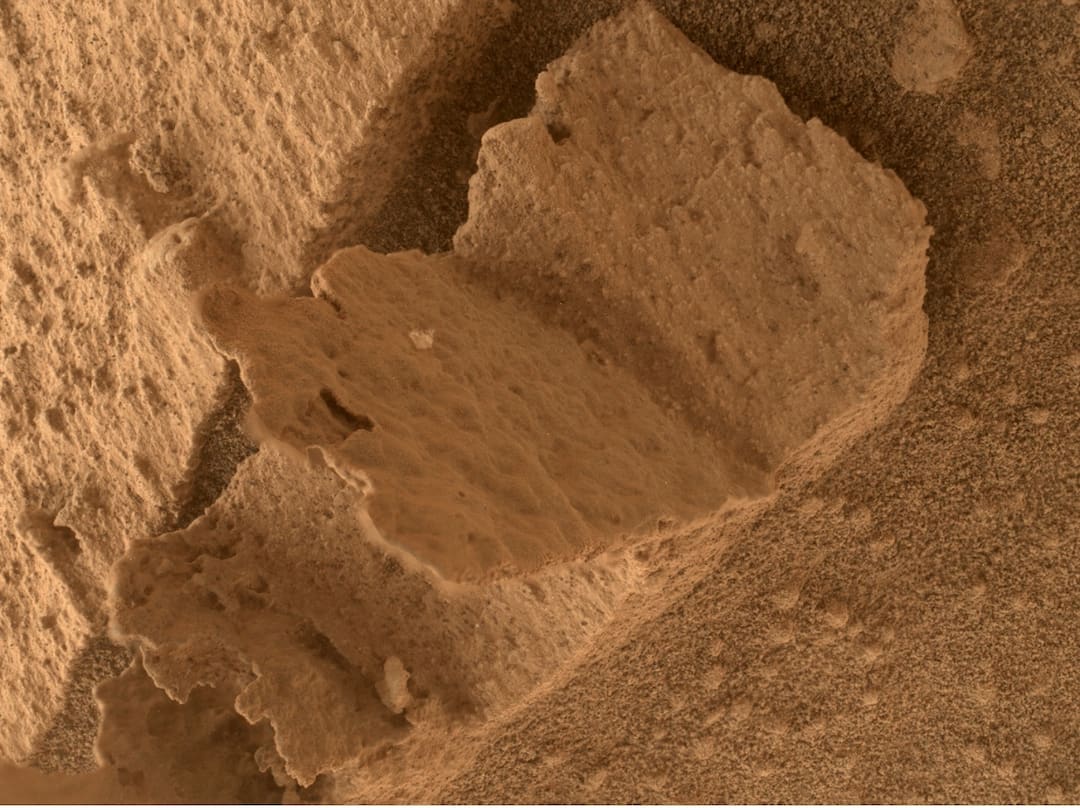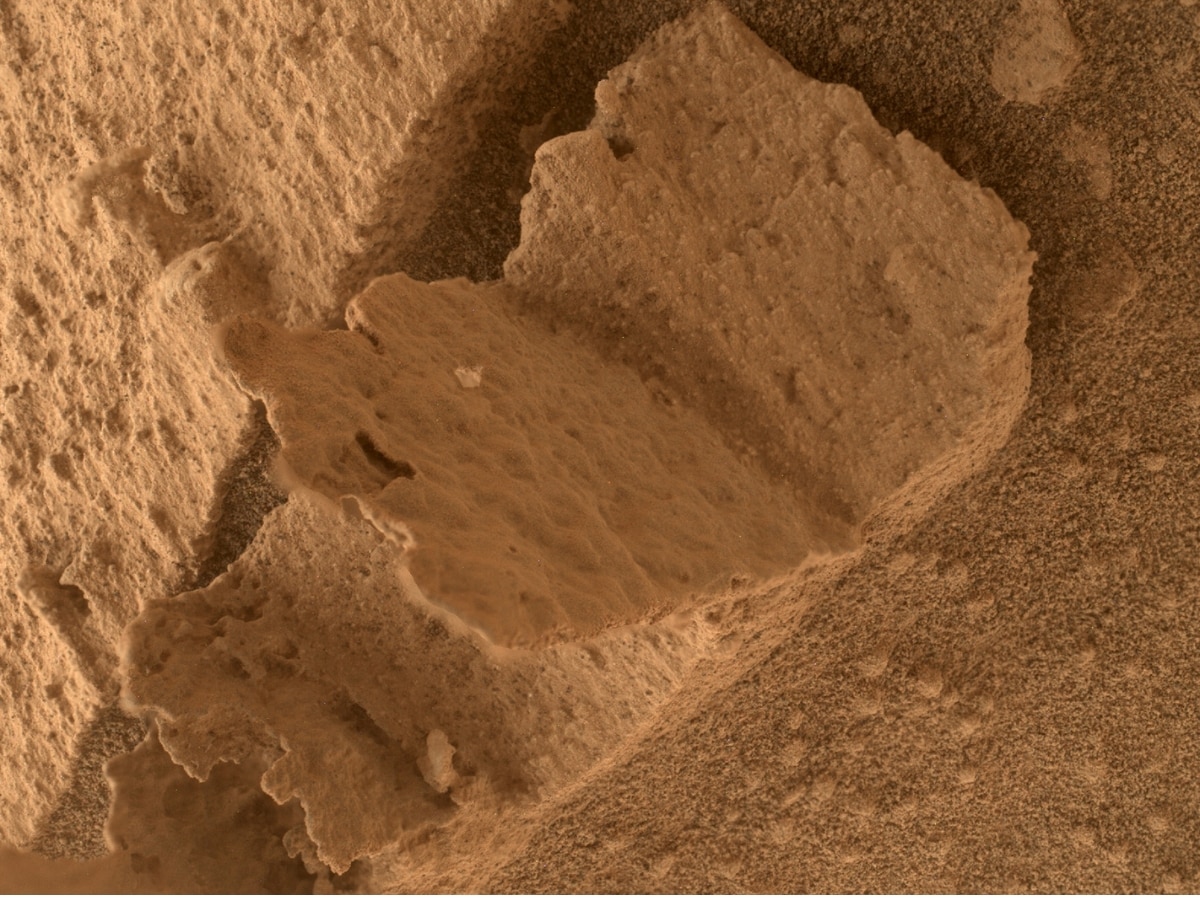NASA's Curiosity Rover Finds Rock Looking Like The 'Open Pages Of A Book' On Mars. See PIC
The rock, nicknamed "Terra Firme", was captured using the Mars Hand Lens Imager (MAHLI) located at the end of Curiosity's robotic arm.

NASA's Curiosity rover has captured a picture of rock that appears like the "open pages of a book". The rover took the picture of the rock on April 15, 2023, on the mission's 3,800th Martian day, or sol, NASA's Jet Propulsion Laboratory (JPL) said on its website.
The rock, nicknamed "Terra Firme", was captured using the Mars Hand Lens Imager (MAHLI) located at the end of Curiosity's robotic arm. The Malin Space Science Systems in San Diego built MAHLI.
Terra Firme is about 2.5 centimetres across, according to JPL.

The Red Planet has several rocks with unusual shapes. These were formed as a result of water seeping through cracks in a rock in the ancient past. As water seeped through these cracks, it brought harder minerals along with it, which were deposited on the rocks.
Softer rock was eroded as a result of wind blasting sand on rocks for aeons. The only materials left of the rock were the hard portions.
ALSO READ | Saturn Gets 'Moon Crown' Back As 62 New Satellites Are Found, Becomes Planet With Most Moons In Solar System
More about Curiosity and its past findings
Launched on November 26, 2011, Curiosity is a part of NASA's Mars Science Laboratory mission, and the largest and most capable rover ever sent to the Red Planet. Curiosity landed on Mars on August 6, 2012, at 1:32 am EDT (11:02 am IST).
The rover was launched with the aim to know whether Mars ever had the right environmental conditions to support small life forms such as microorganisms. Curiosity has found chemical and mineral evidence of past habitable environments on the Red Planet, and continues to study the rocks.
Curiosity discovered a mineral called tridymite in Gale Crater of the Red Planet in 2016, and since then, a mystery puzzled the Mars research community, until last year. In 2022, planetary scientists from Rice University, NASA's Johnson Space Center, and the California Institute of Technology found an answer to the mystery.
Tridymite is a high-temperature, low-pressure form of quartz, and is extremely rare on Earth. Scientists were not immediately able to determine how a concentrated chunk of tridymite ended up in the Gale Crater.
NASA chose Gale Crater as Curiosity's landing site due to the likelihood that it once held liquid water. The rover found evidence that confirmed Gale Crater was a lake as recently as one billion years ago.
A study led by researchers at Rice University found that tridymite was formed on Mars as a result of an explosive volcanic eruption.






































